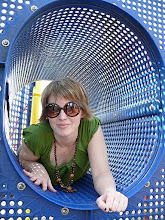This obviously applies to a small audience, but I'm sharing nonetheless.
I really adore my new puppy. Granted, he's kind of a pain in the butt sometimes, and it's been work dealing with his puppiness, but all in all he's a good guy. Very good natured, eager to please, playful with the kids, and darn cute. So far we've taught him to sit, lay down, pee on command, get off the couch when asked, drop whatever's in his mouth, and to not jump up on people. He no longer tries to bite everyone or jump on everyone, which is great. Olivier antagonizes him, so he does still nip and jump with him, but we're working on that. And Liv deserves it. I have a book of tricks that I'll soon start working on with him.
By far the biggest hurdle has been house training, and even though this advice is readily available via google, I thought I'd share what I've learned, and how we handled it, and what worked.
1. Get a crate. We initially tried to gate him in our laundry room, which is very small, but he found places to pee and poop. It wasn't small enough, and he could jump the gate. We hadn't wanted to spend the money on a crate, knowing he'd outgrow it, but we did a couple of days after we got him, and it was SO WORTH IT! You have to get one that's only big enough for the puppy to stand up and turn around in. Anything bigger and he'll find a corner to pee and poop in. The idea is that he instinctively doesn't want to make a mess where he's going to sleep. It really works. He had a couple of accidents in the crate, but very few. He actually still fits in it and we do use it if he's going to be alone for long.
2. Make up a chart to track his habits. Have a column for what time he eats, poops, and pees. You will soon see that he does have a schedule, and this will really help you to be prepared when he needs to go. We used a highlighter to mark each time he had an accident in the house, and we were quickly able to see the number of those incidents decrease, which was gratifying. We charted for about 6 weeks before we felt like we really knew what to expect. He was doing great by the time we stopped.
3. Always take him out before and after you feed him, even if you think you don't need to. We're growing out of this need now because he's learned to tell us when he needs to go, but this was the source of many an accident.
4. When you take him out to pee, use a word (we say "potty") when he goes, and praise him lavishly when he does it outside. Contrary to some advice that I found online, I'd say DON'T stay out there endlessly with him until he goes for the first time. Take him out, say potty, and if he goes, praise him and let him have a little free time inside, supervised. If he doesn't go, crate him and take him out an hour later (or sooner if you think he really needs to go). Keep this up until he goes. He'll quickly learn your command and know what you expect when you take him out, and the time he needs to spend in his crate will decrease.
5. Take away his water bowl a couple of hours before you go to bed. We made the mistake of trusting him one night, and sure enough, he got up and peed in the night. I think by now we could probably trust him, but I still take it away by 9 p.m.
I might think of other tips to add, and feel free to comment with questions. I'm no expert...this is the first time I've ever house trained a puppy. But it feels so good to finally be there. I shouldn't even say this because I'm afraid I'll jinx it, but I think he's pretty much got it. It's been awhile since his last accident. I still watch him carefully and don't trust him too much, but he's been able to go longer and longer at home without us and without being in his crate, which is awesome.
Wednesday, June 30, 2010
Subscribe to:
Post Comments (Atom)



This will be very helpful for when I get a puppy behind Tom's back. I'll say, "It's so easy to train them! Just read Abby's blog!" Thanks!
ReplyDeleteHappy to help!
ReplyDelete